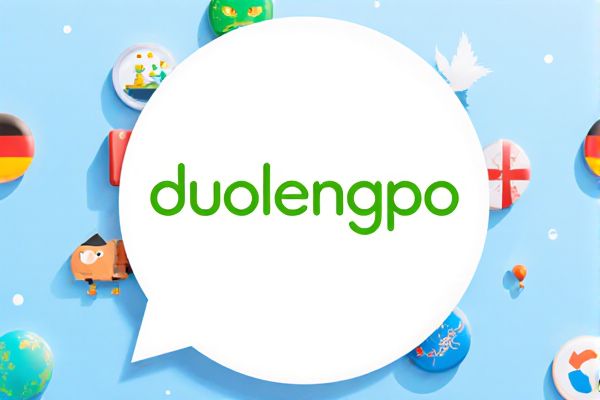
Explore endless possibilities with the Duolingo Random Language Generator, designed to inspire language learners by providing instant access to diverse languages. Whether you're practicing vocabulary or exploring new linguistic structures, this tool sparks creativity and enhances your learning journey. Engage with randomized language selections to discover and master skills effortlessly.
Online tool for random language generator duolingo
We have prepared several sample lists for the random language generator on Duolingo, ready for you to use and randomize. You can also enter your own list to customize the experience. With a single click, you will receive a randomized list along with one selected value for immediate use.Data Source
Single Result
Multiple Results
Introduction to Random Language Generator in Duolingo
The Random Language Generator in Duolingo offers users a unique way to discover new languages by generating language options randomly based on user preferences and popular courses. This feature enhances language learning diversity by introducing unexpected linguistic choices, enabling learners to explore beyond commonly selected languages like Spanish or French. Integrating advanced algorithms, the generator selects languages tailored to user engagement patterns and emerging language trends on the platform.
Purpose and Benefits of Language Randomization
The random language generator on Duolingo serves to promote diverse language learning by encouraging users to explore languages outside their usual preferences, enhancing cognitive flexibility and cultural awareness. This tool increases exposure to lesser-known languages, fostering inclusivity and broadening linguistic horizons. Users benefit from spontaneous language challenges that improve adaptability and motivation in language acquisition.
Core Features of Duolingo’s Random Language Tool
Duolingo's Random Language Generator offers users an innovative way to explore new languages by providing randomized language options tailored to individual learning preferences. Core features include adaptive language selection algorithms that analyze user activity to suggest suitable languages, interactive practice sessions designed to enhance vocabulary and grammar skills, and real-time progress tracking with personalized feedback. This tool supports over 30 languages, fostering diverse linguistic exposure while maintaining Duolingo's gamified learning experience.
Supported Languages and Customization Options
Duolingo's random language generator supports over 40 diverse languages, including popular options like Spanish, French, German, Japanese, and less common languages such as Welsh and Hawaiian. Users can customize their learning experience by selecting language difficulty levels, specific skill sets, and themed vocabulary categories, enhancing personalized language acquisition. The platform also offers grammar tips, pronunciation guides, and interactive exercises tailored to each supported language.
User Experience with Duolingo’s Random Language Generator
Duolingo's Random Language Generator enhances user experience by offering an engaging way to discover new languages, promoting curiosity and language diversification. The feature provides personalized recommendations based on user activity, ensuring a tailored and seamless learning journey. Interactive prompts and dynamic challenges keep users motivated while exploring unfamiliar languages, increasing retention and overall satisfaction.
Enhancing Language Learning Motivation through Randomization
Duolingo's random language generator introduces an element of unpredictability that boosts learner engagement by diversifying practice sessions and maintaining curiosity. This method enhances motivation by breaking the monotony of traditional language learning routines, encouraging users to explore new vocabulary and grammar structures spontaneously. Studies show that randomization in learning platforms like Duolingo increases retention rates and promotes sustained interest through gamified challenges.
Integration with Duolingo’s Existing Learning Modules
The random language generator seamlessly integrates with Duolingo's existing learning modules by dynamically incorporating vocabulary and grammar exercises from various language courses. This integration enhances personalized learning paths and boosts user engagement by offering varied practice sessions tailored to individual proficiency levels. The generator leverages Duolingo's extensive language database, ensuring consistent progression tracking and adaptive difficulty adjustments.
Gamification and Reward Systems in Random Language Selection
Duolingo's random language generator enhances user engagement through gamification techniques that promote exploration and retention. The system integrates reward mechanisms such as XP points, streaks, and badges to motivate learners to consistently practice unfamiliar languages. This dynamic approach fosters a playful learning environment while driving sustained commitment to diverse language acquisition.
Challenges and Limitations of the Random Language Generator
The Random Language Generator in Duolingo often faces challenges in maintaining consistent language complexity, which can result in incongruent difficulty levels for learners. Limitations include a lack of contextual relevance, making some generated phrases less practical or culturally accurate. Furthermore, the generator's reliance on algorithmic patterns sometimes leads to repetitive or less engaging content, hindering the overall learning experience.
Future Prospects for Random Language Tools on Duolingo
Future prospects for random language tools on Duolingo include enhanced AI-driven personalization to tailor language practice based on user proficiency and interests. Integration of advanced natural language processing (NLP) models will enable more dynamic and context-aware language generation, improving user engagement and retention. Expansion of language options, especially for underrepresented and endangered languages, is expected to support broader linguistic diversity and cultural preservation on the platform.
 azrandom.com
azrandom.com